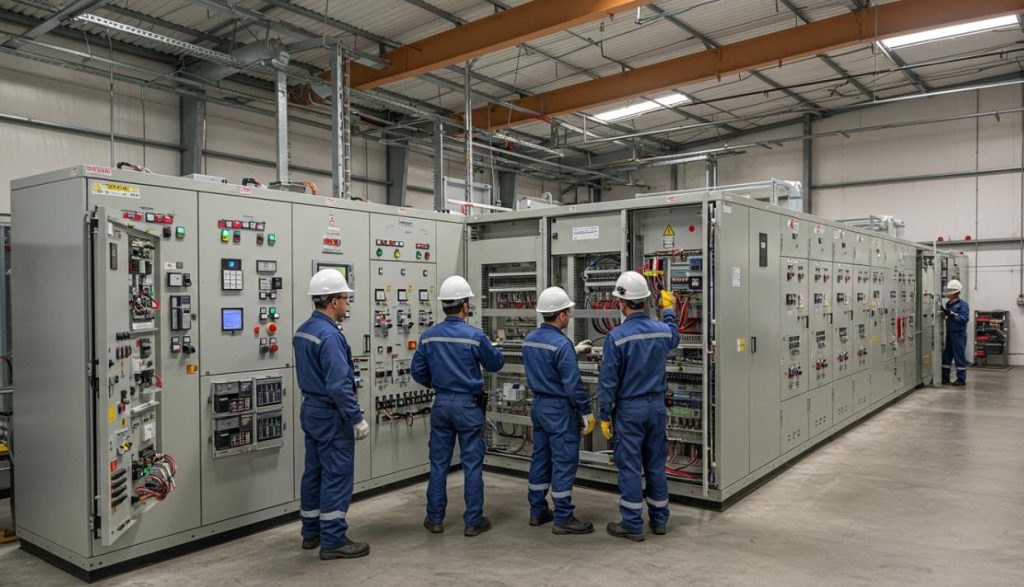Did you know businesses relying on commercial power equipment can face downtime costs averaging up to $260,000 per hour? Implementing a strategic preventive maintenance program significantly reduces equipment downtime, by an estimated 30 to 50%. It also extends equipment life and delivers immediate cost savings. Discover how targeted maintenance optimization elevates operational reliability and performance. This ultimately drives profitability and competitiveness in today’s demanding marketplace.
Keeping Your Commercial Power Equipment Healthy and Costs Under Control
In today’s competitive business environment, reliable commercial power equipment is essential. When machinery falters, it not only disrupts your workflow but also impacts your bottom line. Rather than waiting for costly breakdowns to cause stressful emergencies, proactive strategies can protect your assets. These strategies also enhance operational efficiency.
The True Value of Scheduled Maintenance Checks
Regularly scheduled inspections act as a protective barrier against unexpected breakdowns. This approach avoids unnecessary downtime, inflated repair expenses, and stressful emergency situations. Consistently monitored commercial power machinery reveals early warning signs of potential failure. This allows intervention before matters escalate. Adhering faithfully to recommended inspection intervals ensures peak performance and reliability, keeping your operations running smoothly. Good documentation of these checks is also vital for tracking and compliance.
Transition from Reactive Fixes to Proactive Maintenance
Adopting a proactive approach means shifting from reactive fixes to ongoing health checks and planned interventions. Reactive maintenance might seem practical short-term, until unanticipated disruptions spiral out of control. Moving towards preventive care methods leverages predictive insights, saving valuable hours and resources in troubleshooting sudden malfunctions. This strategic change translates directly into lower operational costs, improved equipment reliability, and stable productivity long-term.
Key Benefits of Implementing a Tailored Maintenance Strategy
Maintaining expensive assets without a clear, personalized plan is like sailing without a compass. Commercial power equipment performs best when maintenance considers its unique usage patterns and the manufacturer’s recommendations. A tailor-made maintenance regimen boosts machine efficiency and prolongs equipment lifespan. This significantly reduces replacement and operational expenses. Such tailored schedules also enhance safety, improve regulatory compliance, decrease downtime, and optimize repair expenditures.
Optimizing Your Maintenance Schedule for Commercial Equipment
Crafting a smart, strategic timeline for equipment checks improves effectiveness and reduces unnecessary expenditures. Let’s explore how to set optimal intervals for preventive interventions tailored to commercial power equipment.
Condition-Based Versus Time-Based Maintenance
Traditionally, companies relied on fixed schedules, replacing or servicing parts after a set period. While simple, this doesn’t account for parts deteriorating at different speeds or under varying conditions. Condition-based maintenance (CBM) strategies use real-time monitoring and data insights. Often, this involves Internet of Things (IoT) sensors collecting data on vibration, temperature, or fluid levels. CBM pinpoints exactly when attention is needed, reducing unnecessary checks and their associated costs.

Risk Assessment: Putting Safety and Productivity First
A sound maintenance strategy starts by assessing risks and identifying machinery critical to your operation. Not all equipment failures carry the same weight, so prioritize preventive measures accordingly. Risk assessment evaluates each machine’s criticality and the possible repercussions of failure. This ensures resources focus primarily on high-impact assets. This strategic approach enhances safety, minimizes operational disruption, and helps meet safety regulations. It also keeps expenses in check.
A Snapshot: Average Preventive Maintenance Timeframes for Common Equipment
The following table provides general guidelines. Always consult manufacturer recommendations and consider your equipment’s specific operating conditions and environment.
|
Equipment Type |
Recommended Maintenance Interval |
|
Commercial Generators |
Every 250 operational hours or as per manufacturer |
|
Industrial Compressors |
Monthly checks; detailed service semi-annually |
|
HVAC Systems |
Quarterly comprehensive inspections; filter changes monthly |
|
Material Handling Equipment |
Every 200 operational hours or quarterly |
|
Commercial Refrigeration Units |
Monthly inspections; annual full-service upkeep |
The Role of Technology in Commercial Equipment Maintenance Optimization
Leveraging advanced technologies streamlines maintenance tasks, enhances accuracy, and produces cost-effective results. Incorporating tools like sensors and computerized management systems allows operators to observe machine health in real-time. This helps spot signs of deterioration precisely when they arise. Additionally, advanced software can automate scheduling, generate maintenance alerts, and predict potential issues. This simplifies workflow and reduces oversights.
Implementing Maintenance Management Software for the Win
Using maintenance management software is transformative, merging multiple tasks effortlessly into one intuitive platform. Programs such as a Computerized Maintenance Management System (CMMS) or Enterprise Asset Management (EAM) put reliable data at your fingertips. They help evaluate equipment efficiency, track historical maintenance activities, manage work orders, and provide accurate inventory levels for spare parts. These systems facilitate detailed record-keeping, failure analysis, and ensure smooth, interruption-free operations. With real-time reporting and streamlined data access, these platforms facilitate timely decisions, helping control costs.
Investing in Team Training for Enhanced Productivity
Technology plays a crucial role, but human expertise remains vital. Adequate training equips your personnel with up-to-date knowledge. This enables them to execute effective preventive measures confidently and safely. Training should cover specific equipment maintenance tasks, data interpretation from monitoring systems, and adherence to safety protocols. Investment in continuous team training increases equipment reliability, boosts morale, and encourages employees to proactively approach maintenance requirements.
Adopting preventive maintenance ensures your commercial power equipment operates optimally, safely, and cost-effectively. A personalized, proactive strategy, combining technology like CMMS with skilled personnel, minimizes unexpected downtime and costly repairs. This approach fosters operational excellence and supports regulatory compliance.
Ready to boost your equipment reliability and control expenses? Connect with KENNY’S SMALL ENGINES REPAIRS experts to unlock the benefits of strategic equipment management.


